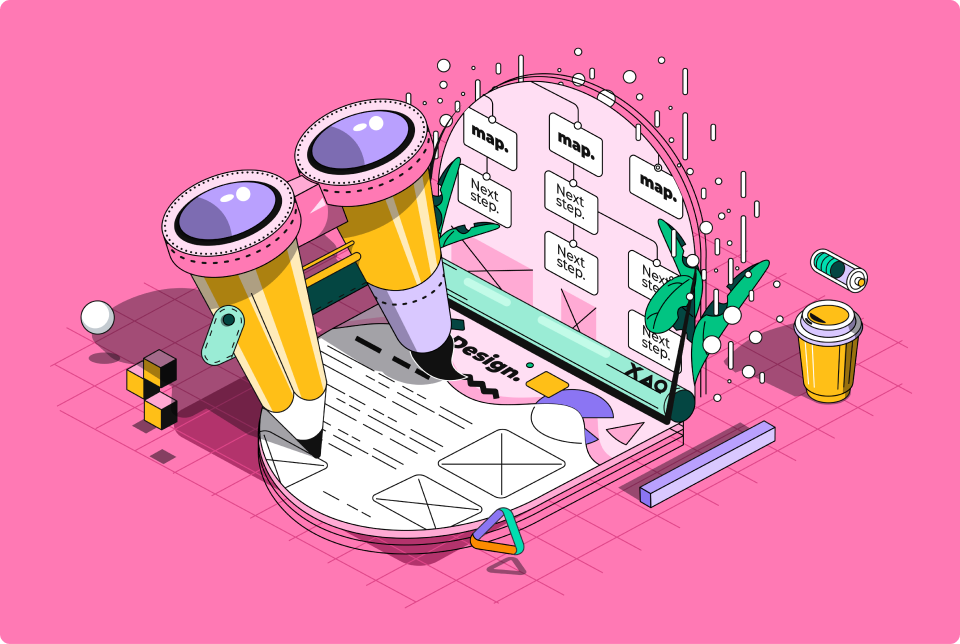
Daniel Chernashki
29 Apr
6 mins read
- Copy link
The critical role of usability in UX Design

Introduction
In the digital landscape, usability is the cornerstone of user experience, determining how users interact with and feel about your products. A focus on usability ensures that a product is more than just functional—it becomes a seamless and enjoyable part of everyday life. This blog post will delve into the essential aspects of usability, explore strategies for optimization, and guide you through conducting effective usability tests, all aimed at helping you create products that resonate deeply with users.
Understanding Usability in UX
Usability in UX refers to the ease with which a user can navigate a product to achieve their goals efficiently and effectively. It encompasses the user's overall experience, ensuring that the product is straightforward, intuitive, and fulfilling. Usability is not just about making things work—it's about making them work well, with minimal friction and maximum satisfaction.
What Makes a Product Usable? The Five Core Qualities
The usability of a product can be broken down into five core qualities that contribute to a superior user experience:
Learnability: How quickly can a new user understand how to use the product? Products with high learnability are easy to grasp and use from the first interaction. Memorability: After using the product, how easily can a user remember how to use it without revisiting instructions? High memorability reduces the learning curve for returning users. Efficiency: Once familiar with the product, how swiftly can users perform their desired tasks? Efficient designs save time, enhancing the user's productivity and satisfaction. Satisfaction: Does using the product feel rewarding? A satisfying user experience can foster loyalty and promote continued use. Error Handling: How does the product handle user errors? Effective error management helps prevent frustration, makes it easy to recover from mistakes, and teaches correct usage.
How to Optimize for Usability?
Optimizing usability is a dynamic and ongoing process that involves several key strategies: User-Centric Design: Keep the user at the heart of the design process. Understand their needs, behaviors, and expectations. Simplify Interactions: Streamline interfaces to reduce complexity. Focus on core functionalities and eliminate unnecessary elements. Feedback and Adaptation: Use real-user feedback to guide iterative improvements. This includes both qualitative insights and quantitative data. Accessibility: Make sure that the product is accessible to all users, including those with disabilities, ensuring a universal user experience. Consistent Testing: Conduct regular usability tests to discover areas for improvement and to validate design decisions.
When to Work on Usability?
Usability should be a priority from the outset of product development and continue through all stages of the lifecycle. Initial designs should be informed by user needs and refined through usability testing. Post-launch, usability should be monitored and optimized based on user feedback and behavior to adapt to changing user needs and technological advancements.
How to Conduct Usability Tests?
Effective usability testing involves observing users as they interact with your product in a controlled environment: Set Clear Objectives: Determine what aspects of usability you want to test, such as effectiveness, efficiency, or satisfaction. Choose the Right Participants: Recruit users who represent your target demographic. Design Representative Tasks: Create tasks that users would typically perform with your product. Observe and Record: Watch how users interact with your product, noting where they succeed and where they struggle. Analyze and Iterate: Use the insights gained from testing to make targeted improvements
Conclusion
Usability is fundamental to creating products that not only meet user needs but also deliver enjoyable and effective experiences. By focusing on the core aspects of usability, regularly engaging with user feedback, and rigorously testing your designs, you can ensure your product stands out in a competitive market. Remember, a usable product is a used product. Implement these strategies to enhance usability and watch your user satisfaction soar.